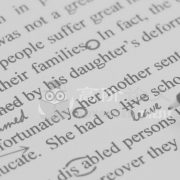新西兰论文网:种族和性别的交集
新西兰论文网:种族和性别的交集
交集可以作为一个概念的定义涉及歧视和压迫的机构组织,被剥夺权利的或轻微的过程有团体之间的互连。交集理论,另一方面是基于这样的概念:压迫性质的机构等社会种族、性别等等不独立而是相互关联的行动,不断塑造着彼此。思想观念出现了第一次在1970年代对激进的女权主义的发展和运动多种族。交集的理论清楚地描述了汗的公民将明显从下面的两个例子的角度分析
表示的设置
在现场,一个房间显示在汗先生和夫人正站和谈话。房间非常缩小设计和空间利用很多东西盒等。房间里有一个吸引人的一个非常简单的家庭属于穆斯林从巴基斯坦由于某些符号和颜色使用的房间如月亮和星星从巴基斯坦国旗的标志和使用绿色和白色2巴基斯坦国旗的颜色很重要。房间已经从所有出现了不平等,因为房间的外观部分的性质对老板的看法使巴基斯坦这个地方看起来像一个房子而不是一个家庭从英格兰(鲈鱼等,2011)。进一步的贡献在于揭示钢筋刻板穆斯林宗教的角度设置为来自亚洲的观众本身。的重复设置,几乎存在于所有巴基斯坦和穆斯林家庭和显示系列针对亚洲人,巴基斯坦人,伊斯兰教也包容只会帮忙人们经历着种族歧视和性别biasness。
新西兰论文网:种族和性别的交集
The definition of intersectionality can be given as a concept involving discriminative and oppressive institutions on groups that are either disenfranchised or minor along with the process in which there is interconnection between the groups. The intersectionality theory on the other hand is based on the conception that institutions of oppressive nature in societies such as race, gender etcetera do not independently act but are rather inter-related and shaped continuously by each other. The thought conception has emerged first during the 1970s with respect to radical development and movement of feminism multi-racially. The theory of intersectionality has been clearly depicted by the episodes of Citizen Khan which will be evident from the perspective of the following 2 examples analysis
Representation of the setting
In the scene, a room is shown wherein Mr. and Mrs. Khan are standing and having conversation. The room has very narrowed designing and the space is utilized to keep a lot of stuff together such as boxes etc. The room has an appeal of a very simple household which belongs to a Muslim from Pakistan due to certain symbols and colours used in the room such as symbol of moon and star from Pakistan’s flag and use of green and white as they are important 2 colours of the Pakistani flag. The room has from all appearance contributed towards inequality because of the appearance of the room being partial in nature with regard to the owner’s perception of making the place look like a Pakistani house rather than a household from England (Bass et al, 2011). Further contribution lies in the setting revealing reinforced stereotypic perspective of Muslim religion to an audience from Asia itself. The repetition of a setting that exists almost in all Pakistani and Muslim homes and showing the series targeted at Asians where Pakistanis and Islam are also inclusive will only contribute towards people experiencing the racial discrimination and gender biasness all over again.







